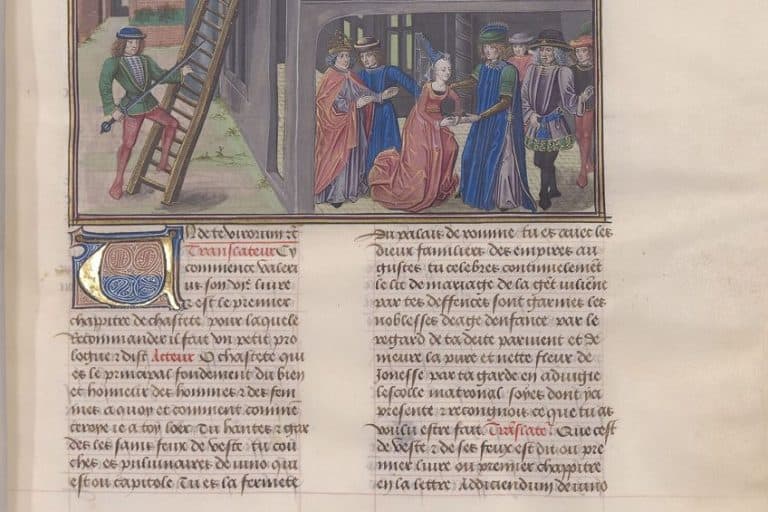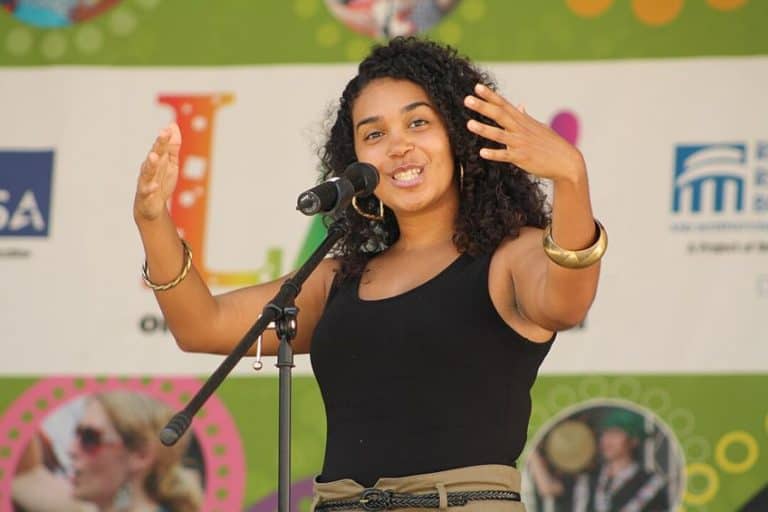What Is a Narrative Poem? – How to Write Narrative Poetry
You may have heard your English teacher or lecturer read a poem that described a whole tale of a heroic journey and dramatic events, or perhaps you encountered one yourself. Maybe it was not about King Arthur and his Knights, but about something else entirely, but either way, the poem whisked you away into a story full of color and feeling. That form of poetry is known as narrative poetry. In the below article, we talk about what is a narrative poem, as well as the different types of narrative poetry, and examples of some famous narrative poems.
Table of Contents
What Is the Definition of Narrative Poetry?
So, what is a narrative poem? In essence, it is a poem that tells a story. This type of poetry is different from other types of poetry, like lyric poetry, because it puts the plot above the emotional aspect of the poem. However, elements from both types of poetry are incorporated into lyric poetry and narrative poetry.

The History of Narrative Poetry and Its Evolution over Time
The beginnings of narrative poetry can be found in oral tradition. Rhyme and repetition made it easier for poets to memorize and recite poems before written language and passed them on verbally. For example, the epic poems The Odyssey and The Iliad (both eighth century BC) by the ancient Greek poet Homer (eighth century BC) were both meant for a spoken tradition and can be seen as narrative poems. These poems were passed down from Homer verbally until it was recorded in written language.
As written language progressed, narrative poetry remained the leading form of verse and was a favorite for medieval poets, such as Geoffrey Chaucer (c. 1340 – 1400). Narrative poetry remained popular even until the Renaissance. Around the 18th century, its popularity decreased due to the move to lyric poetry stimulated by the Romantic poets.
Narrative poetry, however, was not left behind, with one of the most famous ones, Paul Revere’s Ride (1860), being written by Henry Wadsworth Longfellow (1807 – 1882) long after the poetry form’s height of popularity and remains a classic. Narrative poetry is a less dominant form of poetry these days, but can still be found in children’s books and song lyrics. For example, the book The Cat in the Hat (1957) by Dr. Seuss or Theodor Seuss Geisel (1904 – 1991) uses poetic devices, such as repetition, rhythm, and rhyme to tell the entire children’s story. American Pie (1971) is a great example of a narrative ballad by Don McClean (1945 – Present).
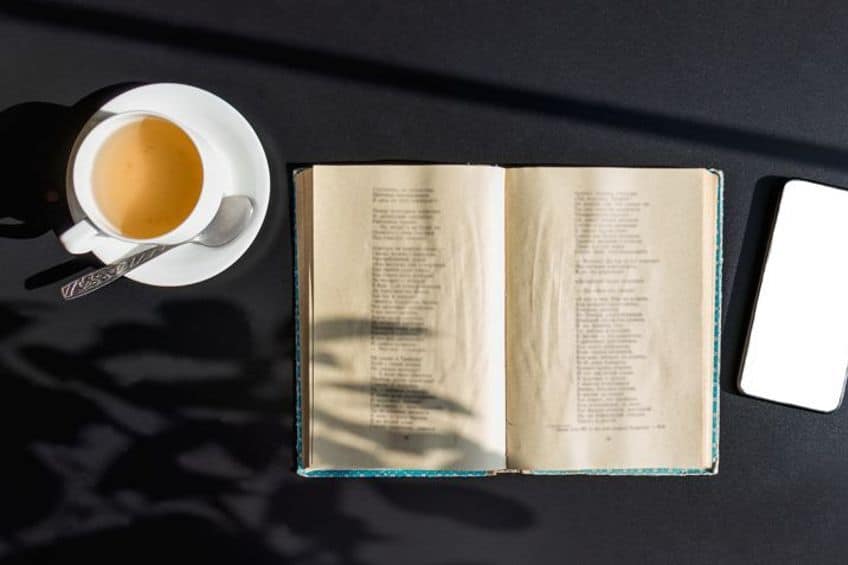
Characteristics of Narrative Poetry
A narrative poem is written in a longer form than other types of poetry, since it is a whole story that has a beginning, middle, and end with a plot, characters, conflict, and resolution. Traditionally, one speaker generally narrates this poem. What sets this form of writing apart from short stories or novels is that it contains poetic devices and is written in verse.
If you hope to complete craft projects where you need paint that will work well for any number of surfaces, then craft paint is your go-to! The consistency is smooth, creamy, and easy to use.
Types of Narrative Poetry and Famous Narrative Poems
There are different types of narrative poems, the most prominent being ballads, epics, and romance poems. Below, we will unpack each of these types of narrative poetry, explaining their characteristics, as well as providing examples of famous narrative poems from each.
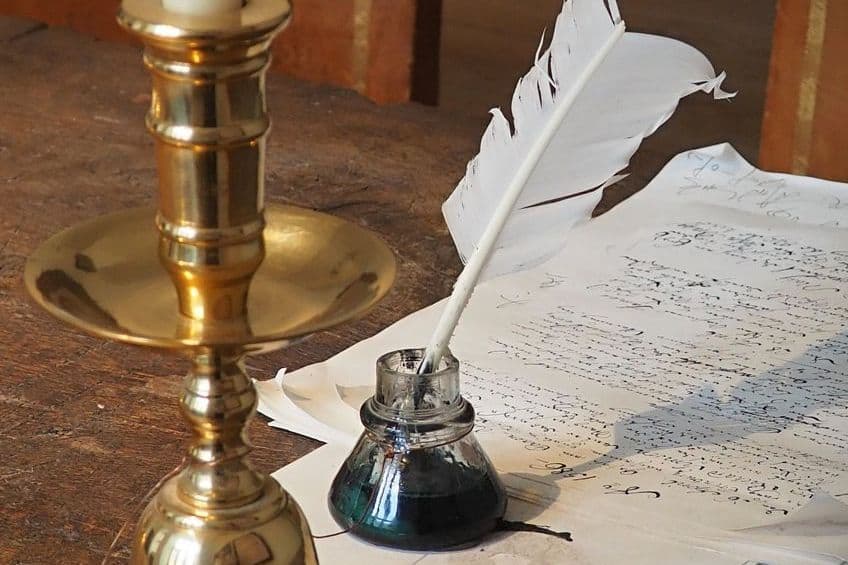
A Ballad
The French word “chanson ballade” were poems intended for dancing and thus set to music, and it is from this word that the ballad we know today derived. Ballads are linked with a particular meter because of their background in music. They are usually written with every second line and fourth line rhyming in iambic trimeter and iambic tetrameter. Iambic trimeter would sound something like da DUM, da DUM, da DUM, and iambic tetrameter would sound something like dah-DUM, dah-DUM, dah-DUM, dah-DUM.
Ballad poems tend to be short in comparison to other forms of narrative poetry.
From the Middle Ages, they were very popular in Britain and Ireland and gained traction throughout Europe and other parts of the world. Traditional or folk ballads are usually by anonymous authors and tell comical, tragic, or heroic tales with a focus on a main dramatic event. Starting in the Renaissance, poets have modified the conventional ways in which the folk ballad is written for their personal creations and we have listed a few of these below.
Examples of Famous Ballads
| Author | John Keats (1795 – 1821) |
| Title | La Belle Dame sans Merci: A Ballad |
| Date Published | 1819 |

“O what can ail thee, knight-at-arms,
Alone and palely loitering?
The sedge has withered from the lake,
And no birds sing.
O what can ail thee, knight-at-arms,
So haggard and so woe-begone?
The squirrel’s granary is full,
And the harvest’s done.
I see a lily on thy brow,
With anguish moist and fever-dew,
And on thy cheeks a fading rose
Fast withereth too.
I met a lady in the meads,
Full beautiful—a faery’s child,
Her hair was long, her foot was light,
And her eyes were wild.
I made a garland for her head,
And bracelets too, and fragrant zone;
She looked at me as she did love,
And made sweet moan
I set her on my pacing steed,
And nothing else saw all day long,
For sidelong would she bend, and sing
A faery’s song.
She found me roots of relish sweet,
And honey wild, and manna-dew,
And sure in language strange she said—
‘I love thee true’.
She took me to her Elfin grot,
And there she wept and sighed full sore,
And there I shut her wild wild eyes
With kisses four.
And there she lullèd me asleep,
And there I dreamed—Ah! woe betide!—
The latest dream I ever dreamt
On the cold hill side.
I saw pale kings and princes too,
Pale warriors, death-pale were they all;
They cried—‘La Belle Dame sans Merci
Thee hath in thrall!’
I saw their starved lips in the gloam,
With horrid warning gapèd wide,
And I awoke and found me here,
On the cold hill’s side.
And this is why I sojourn here,
Alone and palely loitering,
Though the sedge is withered from the lake,
And no birds sing.”
| Author | Thomas Hardy (1840 – 1928) |
| Title | During Wind and Rain |
| Date Published | 1917 |

“They sing their dearest songs—
He, she, all of them—yea,
Treble and tenor and bass,
And one to play;
With the candles mooning each face. . . .
Ah, no; the years O!
How the sick leaves reel down in throngs!
They clear the creeping moss—
Elders and juniors—aye,
Making the pathways neat
And the garden gay;
And they build a shady seat. . . .
Ah, no; the years, the years,
See, the white storm-birds wing across.
They are blithely breakfasting all—
Men and maidens—yea,
Under the summer tree,
With a glimpse of the bay,
While pet fowl come to the knee. . . .
Ah, no; the years O!
And the rotten rose is ript from the wall.
They change to a high new house,
He, she, all of them—aye,
Clocks and carpets and chairs
On the lawn all day,
And brightest things that are theirs. . . .
Ah, no; the years, the years;
Down their carved names the rain-drop ploughs.”
An Epic
“Epic” is derived from “epos” which is an ancient Greek word for poem, story, or word. Epic poems tell tales of legends and historical events and the style of writing is bold and grandiose. They were long poems intended by ancient Greek poets to be read aloud rather than simply read. The meter of an epic poem will depend on the custom of the culture. For example, Old English and Old German epic poems usually included alliterative verse, where alliteration was the principle poetic device, and did not rhyme.
English epics evolved over time and later were written in blank verse and Spenserian stanzas. Latin and ancient Greek epics are usually written in dactylic hexameter. This means that there are six metrical feet per line with three beats or syllables in each.
Typically, an epic narrative poem would be written in a formal style with third-person omniscient narration, and set in the past (usually beyond living memory). It includes a hero that is brave and determined, and the journey in the story takes place in a variety of environments and terrains with circumstances and obstacles that may be otherworldly or supernatural. The epic is often written with concern for following generations of a culture or society, looking towards the future.
Examples of Famous Epic Poems
| Author | Homer (c. 8th century BC) |
| Title | Iliad |
| Date Published | Late eighth or seventh century BC |

The Iliad (eighth/seventh century BC) is a lengthy poem of about 15,693 lines, making up 24 chapters or books. Because of its massive length, we have only included a section from book one of the epic in this article below, but the full version of the Iliad can be found online. The reason why this poem is so long is because it also serves as a historical document, describing the war between Greece and Troy. The main character of the story is Achilles who leads the Myrmidons against the Trojans. Before written language, this sort of narrative poem would serve to pass on the knowledge of events in history to future generations. Being one of two important ancient Greek epic poems by Homer, the Iliad is one of the oldest surviving works of literature read by modern audiences around the world today.
“RAGE:
Sing, Goddess, Achilles’ rage,
Black and murderous, that cost the Greeks
Incalculable pain, pitched countless souls
Of heroes into Hades’ dark,
And left their bodies to rot as feasts
For dogs and birds, as Zeus’ will was done.
Begin with the clash between Agamemnon–
The Greek warlord–and godlike Achilles.
Which of the immortals set these two
At each other’s throats?
Apollo
Zeus’ son and Leto’s, offended
By the warlord. Agamemnon had dishonored
Chryses, Apollo’s priest, so the god
Struck the Greek camp with plague,
And the soldiers were dying of it.”
| Author | John Milton (1608 – 1674) |
| Title | Paradise Lost |
| Date Published | 1667 |

Paradise Lost (1667) is a later epic poem written in blank verse by John Milton (1608-1674) in the 17th century. The first version published in 1667 was made up of over 10,000 lines contained in ten books. The second edition, which was published in 1674, had minor revisions and consisted of 12 books. The story tells of the Fall of Mankind as told in the book of Genesis in the Bible, when Adam and Eve were banished from the Garden of Eden because they ate the fruit from the Tree of Knowledge after being forbidden by God to do so.
A section of Paradise Lost from book one, the 1674 version.
“OF Mans First Disobedience, and the Fruit
Of that Forbidden Tree, whose mortal tast
Brought Death into the World, and all our woe,
With loss of Eden, till one greater Man
Restore us, and regain the blissful Seat,
Sing Heav’nly Muse, that on the secret top
Of Oreb, or of Sinai, didst inspire
That Shepherd, who first taught the chosen Seed,
In the Beginning how the Heav’ns and Earth
Rose out of Chaos: or if Sion Hill
Delight thee more, and Siloa’s brook that flow’d
Fast by the Oracle of God; I thence
Invoke thy aid to my adventrous Song,
That with no middle flight intends to soar
Above th’ Aonian Mount, while it pursues
Things unattempted yet in Prose or Rhime.
And chiefly Thou, O Spirit, that dost prefer
Before all Temples th’ upright heart and pure,
Instruct me, for Thou know’st; Thou from the first
Wast present, and with mighty wings outspread
Dove-like satst brooding on the vast Abyss
And mad’st it pregnant: What in me is dark
Illumin, what is low raise and support;
That to the highth of this great Argument
I may assert Eternal Providence,
And justifie the wayes of God to men.”
A Romance
Coming from France in the 12th century, romances are long narrative poems that focus on love. Arthurian Romances tell tales of adventure and romances against the backdrop of the Arthurian Court. In French and English folklore, the starring figures are King Arthur and his knights. There is a discussion amongst scholars as to whether King Arthur actually existed or is simply a fictional character. The English ruler reigned in the fifth and sixth centuries and is well known for defending the people against the invading Saxons. During the Middle Ages, Arthurian literature was very popular, and later again in the 18th century.
Topics featured in Arthurian Romances focus on various themes, such as the Holy Grail for example, or the Knights of the Round Table, and King Arthur and Guinevere, his wife, as well as other characters linked to the court.
Examples of Famous Romantic Narrative Poetry
| Author | Geoffrey Chaucer (c. 1340s – 1400) |
| Title | The Knight’s Tale |
| Date Published | 14th century AD |
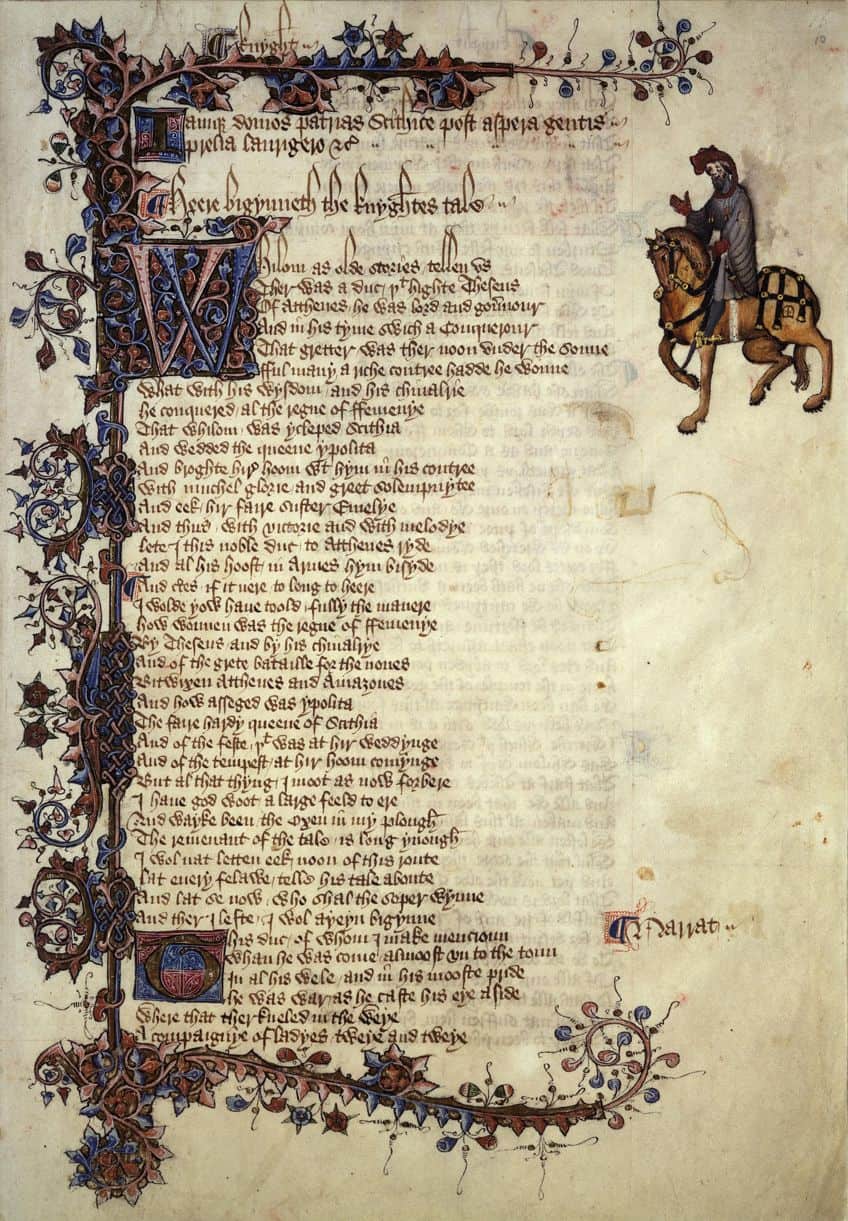
This poem by Geoffrey Chaucer is the first story in his compilation entitled, The Canterbury Tales (c.1387-1400). The poem is divided into four books and contains 2,250 lines in total. The Knight’s Tale captures the ideas, themes, and standards of courtly love.
A piece taken from Book One:
“In days of old there lived, of mighty fame,
A valiant Prince, and Theseus was his name;
A chief, who more in feats of arms excelled,
The rising nor the setting sun beheld.
Of Athens he was lord; much land he won,
And added foreign countries to his crown.
In Scythia with the warrior Queen he strove,
Whom first by force he conquered, then by love;
He brought in triumph back the beauteous dame,
With whom her sister, fair Emilia, came.
With honour to his home let Theseus ride,
With Love to friend, and Fortune for his guide,
And his victorious army at his side.
I pass their warlike pomp, their proud array,
Their shouts, their songs, their welcome on the way;
But, were it not too long, I would recite
The feats of Amazons, the fatal fight
Betwixt the hardy Queen and hero Knight;
The town besieged, and how much blood it cost
The female army, and the Athenian host;
The spousals of Hippolyta the Queen;
What tilts and turneys at the feast were seen;
The storm at their return, the ladies’ fear:
But these and other things I must forbear.”
| Author | Alfred, Lord Tennyson (1809 – 1892) |
| Title | Idylls of the King |
| Date Published | 1859 |

This set of 12 poems are Arthurian romantic poems written in blank verse in the narrative form known as an idyll, and is based on the legend of King Arthur. In the poems, Alfred, Lord Tennyson (1809 – 1892) tells the tale of King Arthur and his knights, as well as the love story between him and Guinevere and her betrayal. Tennyson represented the attitudes and behaviors within Victorian society in a symbolic way through these stories of courtly love and chivalry, raising narrative poetry from telling stories to a vehicle of social commentary. Below is a piece taken from the Idylls of the King.
“I fain would follow love, if that could be;
I needs must follow death, who calls for me;
Call and I follow, I follow! let me die.”
How to Write Narrative Poetry
After reading some of the poems above, you may wonder how to write narrative poetry yourself. Although many of the older traditional narrative poems are long, narrative poetry does not have to be. You could capture a short but emotionally intense event within a few lines or more. You could follow some of the traditional rhythm and rhyming structures that older narrative poems do, but modern poets often follow rhythms that are free and have no rhyming structure. However, almost all narrative poems do have certain characteristics and guidelines that they follow in order for the poem to be a narrative.
There is usually one main character in the story at least, and the story has a beginning, a middle, and an end, and the stories in narrative poetry are usually dramatic in nature and are gripping.
Pointers for Writing a Narrative Poem
First, as with any poem or piece of writing you need to choose a topic. Pick a story that you really want to tell, whether it is one from your own life, your imagination, or one that is based on another work. You do not have to be the narrator, but one of your choosing. The second tip is to make your voice heard by expressing the feelings and emotions through words and tone. Next, you do not need to build up the poem by explaining a particular scene or introducing characters, most narrative poems jump right in and do not waste words. However, do focus on using imagery that is precise by using descriptive words that paint a vibrant picture of the story for the audience. Use all five senses when writing your poem and describing what the scene looks, feels, sounds, smells, and tastes like. Finally, repeating yourself in a poem can have a great dramatic effect, especially if your poem is long. Repeat keywords or phrases that are emotional and set the tone of the story.

We hope that you enjoyed this article on what is a narrative poem. If you enjoyed reading this feature, feel free to explore our other articles on poetry, such as the various types of poetry, how to write your own poem, and more. Other poets that have written poems that you could explore include Ovid (b. 43BC), Edgar Allan Poe (1809 – 1849), William Langland (1332 – 1386), and William Shakespeare (1564 – 1616).
Frequently Asked Questions
What Makes Up a Narrative Poem Structure?
Narrative poetry is essentially a poem that tells a story in verse and would therefore contain developed characters, a narrator, a plot to the story, a beginning, middle, and end, as well as a sort of conflict and resolution which make up the narrative poem structure. Often the second and fourth lines of a narrative poem would rhyme and poetic devices such as personification and metaphors would be used.
What Type of Narrative Poetry Is the Most Popular?
There are three common types of narrative poetry and these are epics, ballads, and Arthurian romances. Epic poems tell tales of legends and historical events and the style of writing is bold and grandiose, a ballad is a narrative poem traditionally set to music and is intended to be sung, and Arthurian Romances tell tales of adventure and romances against the backdrop of the Arthurian Court.
Jaycene-Fay Ravenscroft is a writer, poet, and creative living in South Africa with over 6 years of experience working in a contemporary art gallery. She completed her Bachelor of Arts degree, majoring in Art History and Ancient History at the University of South Africa, with additional subjects in Archaeology and Anthropology.
With a passion for learning, Jaycene-Fay is very much inspired by symbology and the connection between everything in this world. Trained to analyze and ‘critique’ art, she is passionate about exploring the meaning behind each artwork she encounters and understanding how it connects to the artist’s cultural, historical, and social background. Writing is Jaycene-Fay’s way of having a finger in every pie: to research, share knowledge, and express herself creatively.
Learn more about Jaycene-Fay Ravenscroft and the Art in Context Team.
Cite this Article
Jaycene-Fay, Ravenscroft, “What Is a Narrative Poem? – How to Write Narrative Poetry.” Art in Context. May 1, 2023. URL: https://artincontext.org/what-is-a-narrative-poem/
Ravenscroft, J. (2023, 1 May). What Is a Narrative Poem? – How to Write Narrative Poetry. Art in Context. https://artincontext.org/what-is-a-narrative-poem/
Ravenscroft, Jaycene-Fay. “What Is a Narrative Poem? – How to Write Narrative Poetry.” Art in Context, May 1, 2023. https://artincontext.org/what-is-a-narrative-poem/.






